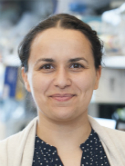Radiosensitizing the SUMO stress response intensifies single-dose radiotherapy tumor cure Journal Article
| Authors: | Cheng, J.; Zhao, L.; Bodo, S.; Nagesh, P. K. B.; Singh, R.; Michel, A. O.; Feldman, R.; Zhang, Z.; Powell, S.; Fuks, Z.; Kolesnick, R. |
| Article Title: | Radiosensitizing the SUMO stress response intensifies single-dose radiotherapy tumor cure |
| Abstract: | Single-dose radiotherapy (SDRT) is a highly curative modality that may transform radiotherapy practice. Unfortunately, only ~50% of oligometastatic lesions are SDRT treatable due to adjacent radiosensitive normal organs at risk. Here, we address the extent to which an antiangiogenic drug, VEGFR2-antagonist DC101, radiosensitizes SDRT using murine MCA/129 fibrosarcomas and Lewis lung carcinomas, which display a dose range for SDRT lesional eradication virtually identical to that employed clinically (10–30 Gy). SDRT induces unique tumor cure, stimulating rapid endothelial acid sphingomyelinase (ASMase)/ceramide signaling that yields marked vasoconstriction and perfusion defects in tumor xenografts and human oligometastases. Ensuing tumor parenchymal oxidative damage initiates a SUMO stress response (SSR), which inactivates multiple homologous recombination repair enzymes, radiosensitizing all tumor types. While VEGF inhibits neoangiogenic ASMase, optimal radiosensitization occurs only upon antiangiogenic drug delivery at ~1 hour preceding SDRT. Obeying these principles, we find DC101 radiosensitizes SSR, DNA doublestrand break unrepair, and tumor cure by 4–8 Gy at all clinically relevant doses. Critically, DC101 fails to sensitize small intestinal endothelial injury or lethality from the gastrointestinal–acute radiation syndrome. Whereas normal tissues appear not to be under VEGF regulation nor sensitized by our approach, its application might render many currently intractable oligometastatic lesions susceptible to SDRT eradication. © 2025, Cheng et al. |
| Keywords: | controlled study; vascular endothelial growth factor a; angiogenesis inhibitor; nonhuman; cancer radiotherapy; radiation dose; nuclear magnetic resonance imaging; animal cell; mouse; animal; metabolism; animals; mice; animal tissue; dna damage; apoptosis; radiotherapy; animal experiment; animal model; antineoplastic activity; drug effect; drug screening; pathology; xenograft model antitumor assays; cell line, tumor; vasculotropin receptor 2; vascular endothelial growth factor receptor-2; mice, inbred c57bl; radiation response; c57bl mouse; fibrosarcoma; tumor cell line; western blotting; irradiation; vasculotropin a; radiosensitivity; oxidative stress; sumoylation; angiogenesis inhibitors; radiosensitizing agent; radiation-sensitizing agents; radiosensitization; lewis carcinoma; sphingomyelin phosphodiesterase; radiation tolerance; tumor microenvironment; carcinoma, lewis lung; monoclonal antibody dc101; medical procedures; humans; human; male; female; article; fibrosarcoma cell; acute radiation syndrome; single dose radiotherapy; lewis lung carcinoma cell line; mca 129 fibrosarcoma cell; sumo stress response |
| Journal Title: | JCI Insight |
| Volume: | 10 |
| Issue: | 12 |
| ISSN: | 2379-3708 |
| Publisher: | Amer Soc Clinical Investigation Inc |
| Date Published: | 2025-06-23 |
| Start Page: | e153601 |
| Language: | English |
| DOI: | 10.1172/jci.insight.153601 |
| PUBMED: | 40402574 |
| PROVIDER: | scopus |
| PMCID: | PMC12220964 |
| DOI/URL: | |
| Notes: | Article -- MSK Cancer Center Support Grant (P30 CA008748) acknowledged in PubMed and PDF -- MSK corresponding author is Richard Kolesnick -- Source: Scopus |
Altmetric
Citation Impact
BMJ Impact Analytics
MSK Authors
Related MSK Work













